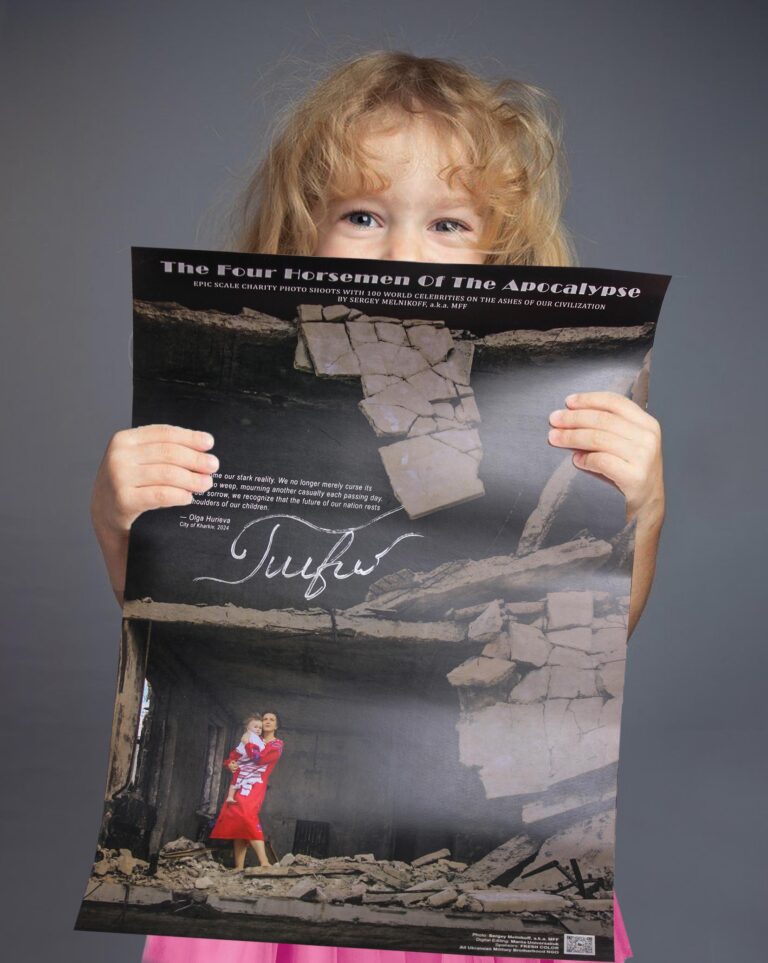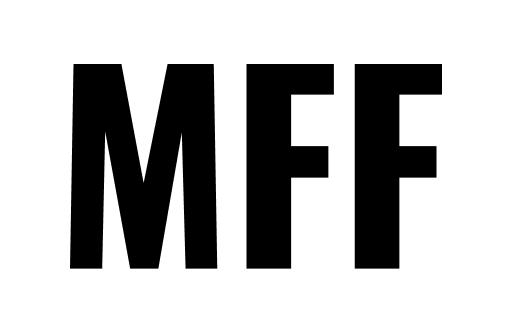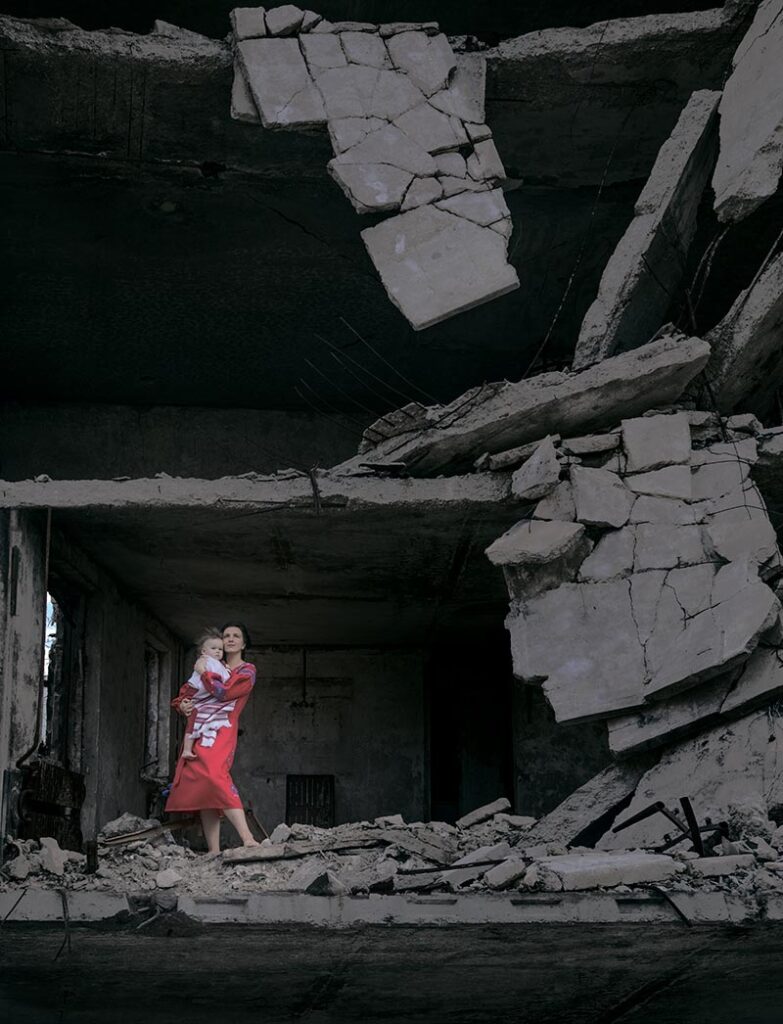
A Mother's Enduring Grace
Amid the charred walls where life once pulsed, silence now reigns over the ruins. The house on Metrostroevtsev Street in Kharkiv, torn apart by a ballistic strike, lies as a mute reproach to human madness. And yet, in the midst of this stone darkness, a light is born. A woman in a crimson dress, a child in her arms, steps across the wreckage as if along a road of hope.
The red of her garment is both the blood of war and the flame of love. This vivid stroke upon the gray canvas of destruction becomes the heart of the image. She walks barefoot across the shards of the past, the dust of broken dreams. But in her gaze there is no fear — only a path leading beyond the horizon of ruin, toward a world yet to be rebuilt.
The stone around her is fractured, but her spirit remains whole. Like a Madonna of our time, she carries her son — a symbol of life, a sign that love is stronger than death. She is like the earth itself: bloodied, but still holding within the promise of dawn.
The woman portrayed is Olha Hurieva, a resident of long-suffering Kharkiv, with her son Yehor. The scene was originally conceived as a storyboard for Louise Ciccone (Madonna). Should Louise one day embody this image before the camera, she would forever become the face of the modern Sistine Madonna, uniting the universal symbol of motherhood with her stage name. With such a portrayal, the photograph would stand as one of the key works in the large-scale project “The Four Horsemen of the Apocalypse” — an artistic testimony of our time and a warning for the future.
The photographer captured a moment when time froze between what was and what will be. Within this frame live a cry and a prayer, pain and hope. The photograph becomes a hymn to those who have walked through hell and still kept light in their hearts. For even among ashes, life finds a way — in a mother’s eyes, in a child’s breath, in a step through the ruins.
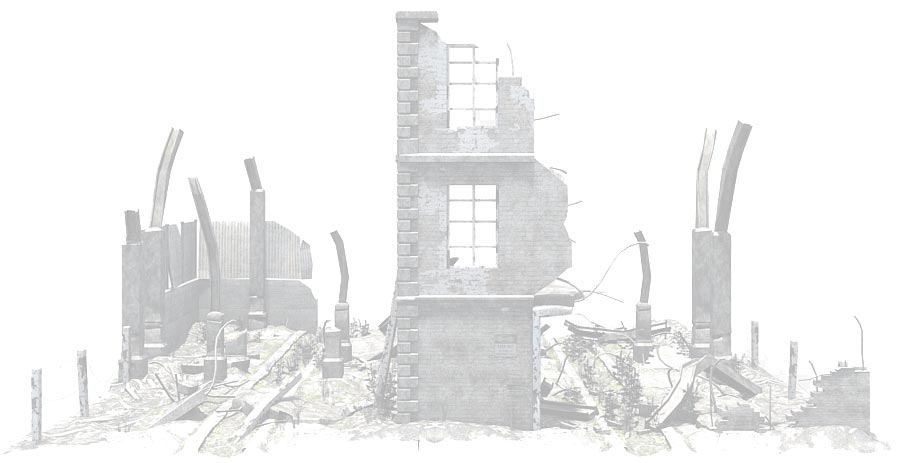
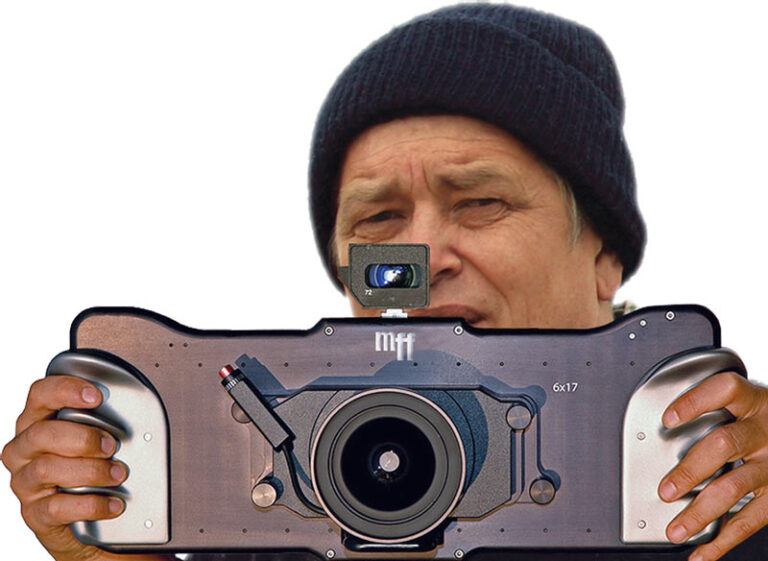
— While selecting locations for a photo shoot in Kharkiv city, I found myself overwhelmed by a sudden urge to fly the Enola Gay over Moscow…
— Sergey Melnikoff, a.k.a. MFF
The Last Madonna
A Portrait of Maternal Sacrifice and Resilience
The woman holding a child in her arms stands barefoot on the very edge of a concrete slab — all that remains of the floor of what was once her home. She is surrounded by epic devastation: the jagged remnants of a multi-story building loom overhead, with shattered slabs of reinforced concrete dangling precariously after a massive Russian ballistic missile struck in the dead of night.
This haunting image evokes the timeless figure of the Madonna — not the celestial icon of serene divinity, but a modern-day Madonna forged in fire and ruin. Cradling her child amid the wreckage, she embodies the classical archetype of maternal sacrifice and resilience, a symbol of unconditional love, protection, and the unyielding strength of motherhood. In the midst of destruction, she stands not only as a mother but as a sacred presence — a silent prayer carved into concrete and ash — bearing witness to the horror and holding fast to a fragile spark of hope.
A Photo Gallery
Behind the scenes photography by Sergey Ermakov
